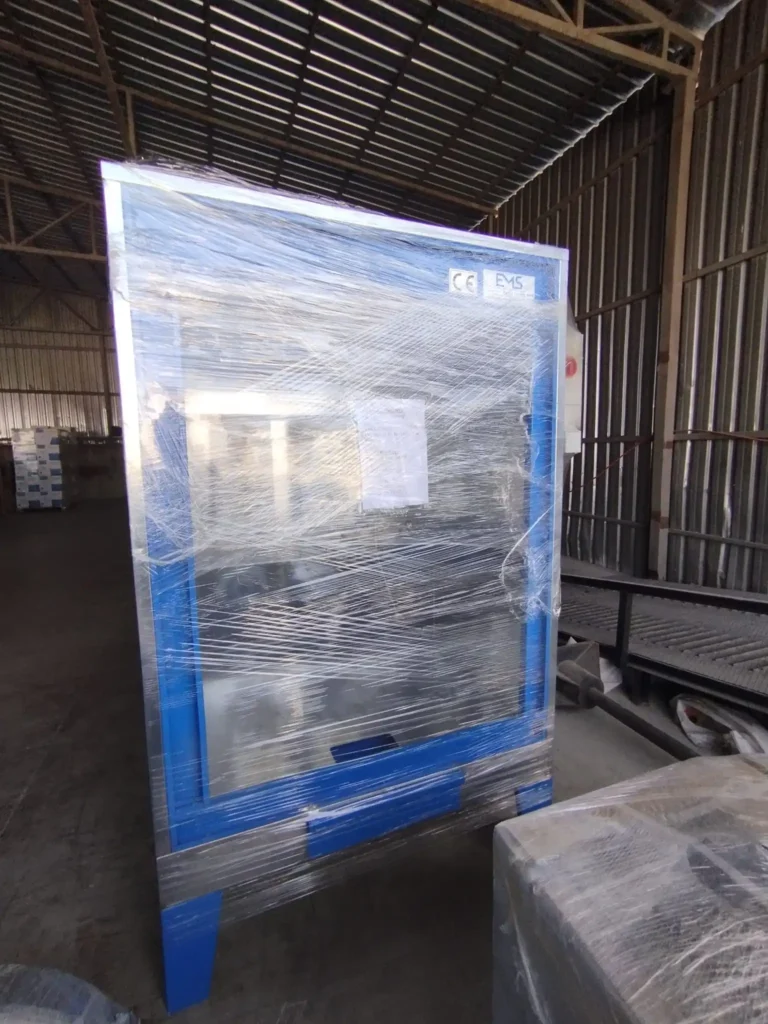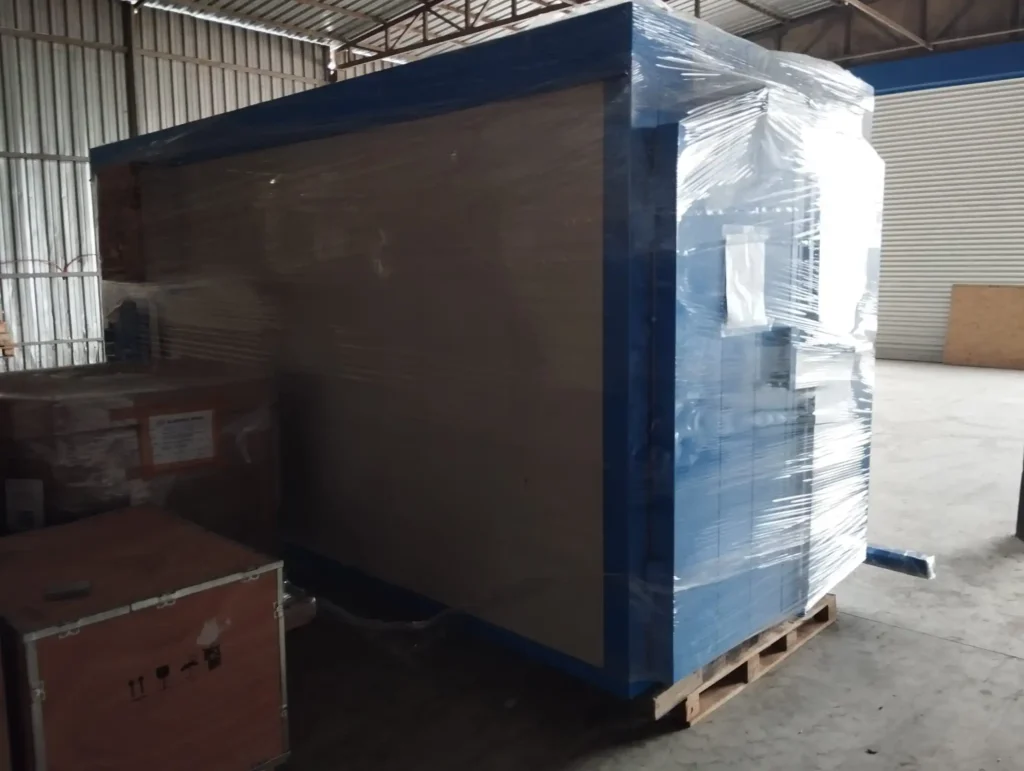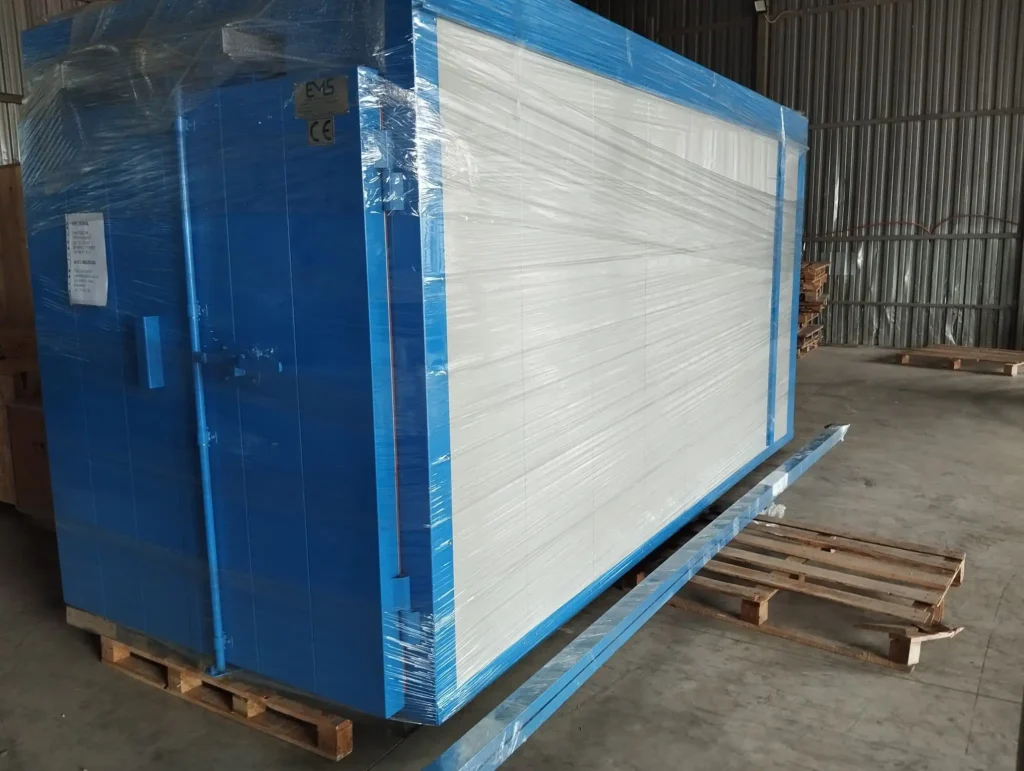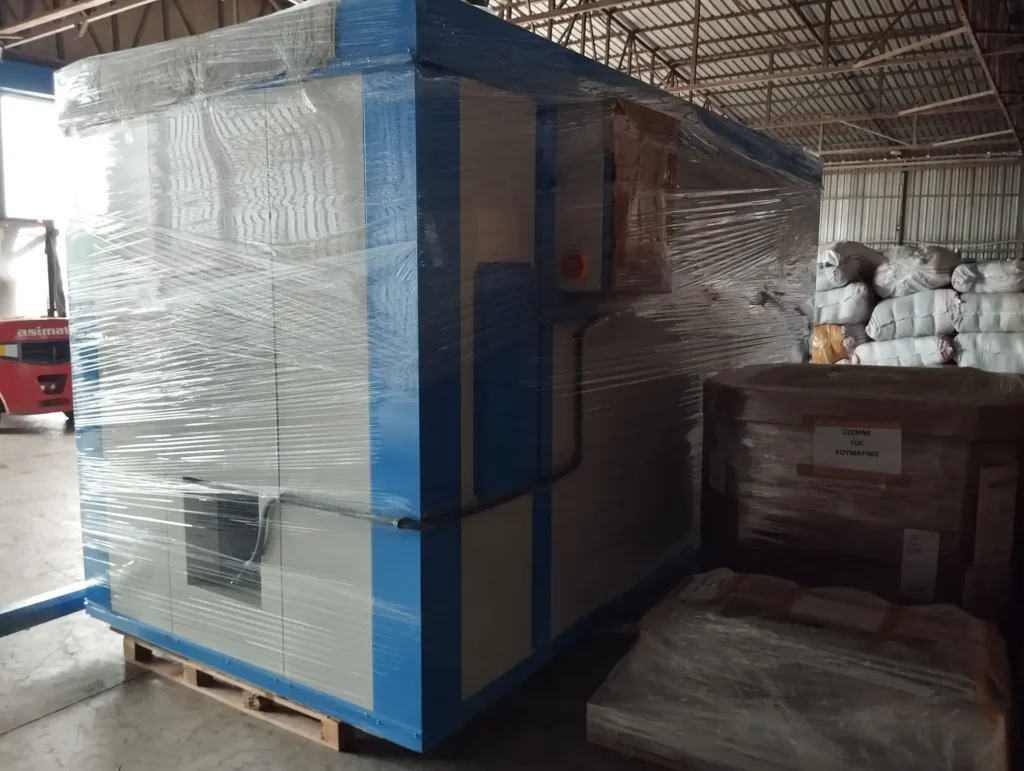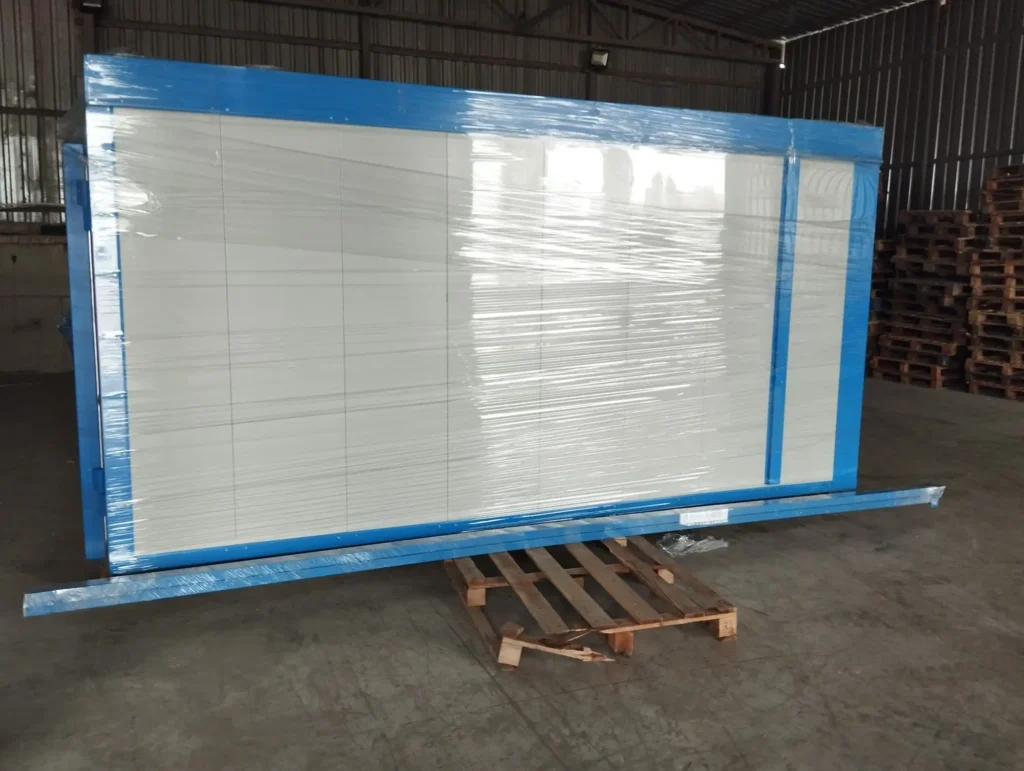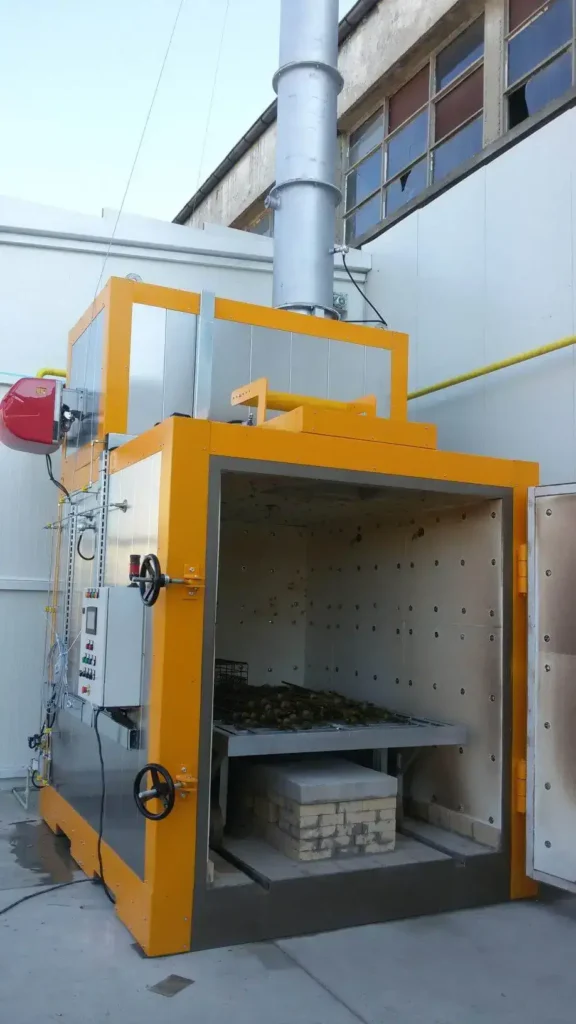
Pyrolysis cleaning is a method used for cleaning ovens, specifically self-cleaning ovens. The word “pyrolysis” refers to a process where high temperatures are applied to break down organic substances into simpler compounds. In the context of oven cleaning, pyrolysis cleaning uses extreme heat to turn food residues and grease into ash, which can then be easily wiped away.
Here’s how the pyrolysis cleaning process generally works:
- Initiation: The user initiates the self-cleaning cycle on the oven control panel. This usually involves setting the oven to a specific temperature, typically around 500 to 900 degrees Fahrenheit (260 to 480 degrees Celsius), depending on the oven model.
- Locking mechanism: The oven door locks automatically during the cleaning cycle to prevent the user from opening it while the high temperatures are present.
- High temperature: The oven’s heating elements generate extremely high temperatures, causing the organic residues inside the oven to break down and turn into ash. This process typically takes a few hours.
- Cooling period: After the cleaning cycle is complete, the oven goes through a cooling period before the door unlocks. This cooling period allows the oven to return to a safe temperature for the user to open the door.
- Ash removal: Once the door unlocks, the user can simply wipe away the ash using a damp cloth or sponge. The ash is the result of the food particles and grease being broken down by the high heat.
Pyrolysis cleaning is an effective way to clean ovens because it eliminates the need for chemical cleaners, as the residues are incinerated during the high-temperature cleaning cycle. However, it’s essential to follow the manufacturer’s instructions carefully and ensure proper ventilation during the process due to the high temperatures involved.
Oven Self-Cleaning & Pyrolysis Cleaning
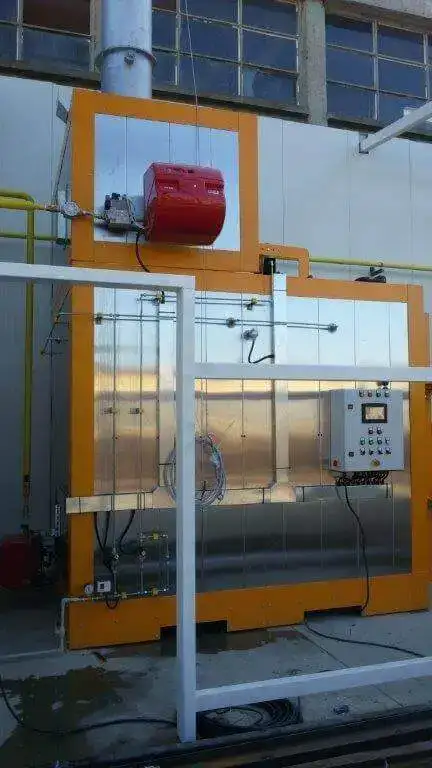
Oven self-cleaning is an advanced cleaning mechanism integrated into modern ovens, leveraging a process known as pyrolysis. In this innovative feature, ovens are equipped with specialized settings that initiate a high-temperature cleaning cycle, eliminating the need for manual scrubbing or chemical cleaners.
During the self-cleaning cycle, the oven’s temperature is elevated to extreme levels, typically reaching between 500 to 900 degrees Fahrenheit (260 to 480 degrees Celsius). This intense heat induces pyrolysis, a thermal decomposition process where organic materials such as food residues and grease are broken down into ash. The self-cleaning process lasts several hours, allowing sufficient time for the organic matter to be reduced to a powdery residue.
The oven door automatically locks during the cleaning cycle to ensure user safety, preventing accidental exposure to the high temperatures within. Once the self-cleaning process is completed, the oven goes through a cooling phase before unlocking the door, allowing users to safely access the cleaned interior.
One of the key advantages of oven self-cleaning is its eco-friendly nature. By using high temperatures rather than chemical agents, it eliminates the need for potentially harmful cleaning substances. Additionally, this method simplifies maintenance for users, as they only need to wipe away the resulting ash with a damp cloth after the cycle is complete.
In summary, oven self-cleaning through pyrolysis offers a convenient and efficient way to maintain a hygienic oven interior, showcasing the integration of advanced technology in modern kitchen appliances.
High-Temperature Cleaning:
High-temperature cleaning is a cleaning methodology applied in various appliances, with ovens being a prominent example. This technique involves subjecting the appliance, particularly the oven, to elevated temperatures to facilitate the decomposition of organic residues, grease, and food particles.
In the context of oven cleaning, high-temperature cleaning is often achieved through a process called pyrolysis. Pyrolysis involves exposing materials to extremely high temperatures in the absence of oxygen, causing them to break down into simpler compounds. In the case of oven cleaning, this process effectively transforms organic residues into ash, which can be easily wiped away after the cleaning cycle.
During a high-temperature cleaning cycle, the oven’s internal temperature is raised significantly, typically ranging from 500 to 900 degrees Fahrenheit (260 to 480 degrees Celsius). This intense heat initiates the breakdown of complex organic compounds, turning them into ash without the need for manual intervention.
High-temperature cleaning offers several advantages, including the elimination of stubborn stains and grease, ensuring a thorough and efficient cleaning process. It also contributes to improved hygiene by reducing the risk of bacteria and contaminants in the oven. Additionally, this method minimizes the need for chemical cleaners, aligning with environmentally friendly practices.
In summary, high-temperature cleaning, often coupled with pyrolysis, is a powerful and efficient approach for maintaining appliances, particularly ovens, by harnessing extreme heat to break down and eliminate organic residues.
Pyrolytic Oven and Pyrolysis Cleaning

A pyrolytic oven represents a technological advancement in the realm of kitchen appliances, specifically designed to streamline the cleaning process and enhance user convenience. The key feature that distinguishes a pyrolytic oven from conventional models is its integrated self-cleaning mechanism based on the principle of pyrolysis.
At the core of a pyrolytic oven is the ability to initiate a high-temperature cleaning cycle. Users can activate this feature through the oven’s control panel, prompting the appliance to reach extreme temperatures, typically ranging between 500 to 900 degrees Fahrenheit (260 to 480 degrees Celsius). This elevated temperature induces pyrolysis, a process where organic residues, food splatters, and grease within the oven are subjected to intense heat, breaking down into ash.
During the pyrolytic cleaning cycle, the oven door automatically locks to ensure user safety, preventing access to the scorching temperatures within. The duration of the cleaning cycle allows ample time for the pyrolysis process to take effect, transforming the organic matter into a fine ash that can be easily wiped away once the cycle is complete.
Pyrolytic ovens offer several advantages. Firstly, they eliminate the need for manual scrubbing or the use of chemical cleaners, promoting a more environmentally friendly and user-friendly approach to oven maintenance. Secondly, the thoroughness of the pyrolytic cleaning process ensures that even stubborn residues are effectively reduced to ash, leaving the oven interior spotless and hygienic.
In summary, a pyrolytic oven exemplifies the fusion of advanced technology and practicality, providing users with a hassle-free and efficient means of maintaining a clean and sanitized oven interior through the application of pyrolysis-based self-cleaning cycles.
Automatic Cleaning Cycle:
An automatic cleaning cycle is a feature embedded in modern ovens, designed to simplify the arduous task of oven maintenance. This functionality, often associated with self-cleaning ovens, automates the cleaning process through a predefined cycle, sparing users from manual scrubbing and the use of chemical cleaners.
The heart of the automatic cleaning cycle lies in its ability to initiate a self-cleaning mechanism. Users can activate this cycle through the oven’s control panel, triggering a series of automated steps to remove built-up residues, grease, and food particles within the oven cavity. The process typically revolves around the application of high temperatures, a method commonly referred to as pyrolysis.
During the automatic cleaning cycle, the oven temperature rises significantly, reaching levels between 500 to 900 degrees Fahrenheit (260 to 480 degrees Celsius). This elevated temperature induces pyrolysis, causing organic substances to break down into ash. The duration of the cycle allows for a comprehensive cleaning, ensuring that even stubborn residues are effectively reduced to ash.
To ensure user safety, the oven door automatically locks during the cleaning cycle, preventing access to the high temperatures within. After the cleaning process is complete, the oven undergoes a cooling phase before unlocking the door, enabling users to access the clean interior without risk.
The automatic cleaning cycle is a user-friendly and efficient solution for maintaining oven hygiene. It minimizes the need for manual effort and chemical cleaners, aligning with a more environmentally conscious approach to kitchen appliance maintenance. In summary, the automatic cleaning cycle represents a convenient and advanced feature, contributing to the ease of use and longevity of modern ovens.
Residue Incineration:
Residue incineration is a critical aspect of cleaning processes, especially in the context of self-cleaning ovens utilizing pyrolysis. This term refers to the controlled burning or decomposition of organic residues, food particles, and grease within the oven, resulting in their transformation into ash.
In the realm of oven maintenance, residue incineration is achieved through the application of high temperatures during a specific cleaning cycle. In the pyrolysis process, the oven temperature is elevated to extreme levels, typically ranging from 500 to 900 degrees Fahrenheit (260 to 480 degrees Celsius). This intense heat induces the thermal decomposition of organic materials, breaking them down into simpler compounds such as carbon and ash.
The residue incineration process is highly effective in eliminating stubborn residues that may accumulate over time, providing a thorough cleaning of the oven interior. During the cleaning cycle, the oven door locks automatically to prevent user exposure to the elevated temperatures required for pyrolysis. This safety feature ensures that the residue incineration process occurs in a controlled environment.
The resulting ash from residue incineration is fine and easily wiped away once the cleaning cycle is complete. This process not only simplifies oven maintenance for users but also contributes to a more hygienic cooking environment by reducing the presence of food remnants and grease.
In summary, residue incineration is a fundamental element of self-cleaning oven technology, harnessing the power of pyrolysis to break down organic residues into ash. This ensures a thorough and efficient cleaning process without the need for manual intervention or chemical cleaners.
Grease Elimination:
Grease elimination is a crucial aspect of oven maintenance, and it is particularly addressed through advanced cleaning processes such as those involving pyrolysis. In the context of oven technology, grease elimination refers to the effective removal and decomposition of accumulated grease and oily residues within the oven cavity.
Pyrolysis, a process central to self-cleaning ovens, plays a key role in grease elimination. During the cleaning cycle, the oven is heated to high temperatures, typically ranging from 500 to 900 degrees Fahrenheit (260 to 480 degrees Celsius). This intense heat causes the thermal breakdown of grease molecules, transforming them into simpler compounds and ultimately reducing them to ash.
The high temperatures applied during the pyrolytic cleaning cycle ensure that even stubborn and baked-on grease is effectively eliminated. The decomposition process breaks down the complex organic compounds present in grease, facilitating their conversion into a powdery residue that can be easily wiped away after the cleaning cycle is complete.
The efficiency of grease elimination not only contributes to the cleanliness of the oven but also plays a crucial role in maintaining optimal cooking performance. Reduced grease buildup minimizes the risk of smoke, odors, and potential fire hazards during cooking.
In summary, grease elimination through pyrolysis is an integral part of modern oven cleaning technology. By utilizing high temperatures to break down and incinerate grease, self-cleaning ovens provide users with a convenient and efficient means of maintaining a hygienic cooking environment while enhancing the longevity and safety of the appliance.
Self-Cleaning Technology:
Self-cleaning technology represents a transformative advancement in kitchen appliances, particularly in the domain of ovens. This innovative feature is designed to autonomously manage the cleaning process, eliminating the need for manual scrubbing and the use of traditional chemical cleaners.
At the core of self-cleaning technology in ovens is the integration of specialized cleaning cycles, often employing a method known as pyrolysis. When activated by the user through the oven’s control panel, the self-cleaning cycle initiates a sequence of automated steps. This includes raising the oven’s temperature significantly, typically between 500 to 900 degrees Fahrenheit (260 to 480 degrees Celsius), to induce pyrolysis.
During the self-cleaning cycle, organic residues, food particles, and grease within the oven are subjected to intense heat, breaking down into ash. The oven door automatically locks during this process to ensure user safety. Once the cleaning cycle is complete, the oven undergoes a cooling phase before unlocking the door, allowing users to access the clean interior.
Self-cleaning technology offers several advantages. Firstly, it provides users with a hands-free approach to oven maintenance, saving time and effort. Secondly, it contributes to environmental sustainability by minimizing the use of chemical cleaners. Additionally, the thoroughness of the cleaning process ensures a hygienic cooking environment, reducing the risk of odors, smoke, and potential fire hazards.
In summary, self-cleaning technology, often leveraging pyrolysis, is a testament to the integration of convenience and efficiency in modern kitchen appliances. It exemplifies a user-centric approach to oven maintenance, making it more accessible and environmentally friendly while enhancing the overall performance and longevity of the appliance.
Ash Removal:
Ash removal is the final step in the self-cleaning process of ovens utilizing pyrolysis technology. Once the high-temperature cleaning cycle is completed, the organic residues, food particles, and grease within the oven are transformed into a fine powdery substance known as ash. Ash removal involves the straightforward task of wiping away this residue to reveal a thoroughly cleaned oven interior.
After the self-cleaning cycle concludes, the oven typically undergoes a cooling period to bring the internal temperature back to a safe level. Subsequently, the oven door unlocks, allowing users to access the ash residue inside. The ash is easily removed using a damp cloth or sponge, and its powdery consistency ensures a quick and efficient cleaning process.
The simplicity of ash removal is a significant advantage of pyrolytic cleaning. Users do not need to engage in strenuous scrubbing or employ chemical cleaners to restore the oven’s interior to a pristine state. The residual ash is composed of the organic materials that were broken down during the high-temperature cleaning cycle, and its removal marks the conclusion of the self-cleaning process.
In addition to providing a convenient cleanup solution, ash removal contributes to maintaining a hygienic cooking environment. By eliminating the ash residue, users ensure that any remaining traces of organic matter are completely eradicated, promoting optimal food safety and preventing potential cross-contamination during subsequent cooking activities.
In summary, ash removal is the final step in the self-cleaning process of pyrolytic ovens, offering users a straightforward and effective means of maintaining a clean and sanitary cooking appliance.
Oven Maintenance:
Oven maintenance is a crucial aspect of ensuring the longevity, efficiency, and safety of kitchen appliances. While there are various methods for maintaining ovens, the advent of advanced technologies, such as pyrolytic cleaning, has revolutionized the way users approach the upkeep of their cooking equipment.
In the context of oven maintenance, pyrolytic cleaning is a standout feature. It automates the cleaning process through a self-cleaning cycle that utilizes high temperatures, typically ranging from 500 to 900 degrees Fahrenheit (260 to 480 degrees Celsius), inducing pyrolysis. This process breaks down organic residues, food particles, and grease within the oven, reducing them to ash. The entire cleaning cycle is controlled and initiated by the user through the oven’s control panel.
The automatic nature of pyrolytic cleaning significantly simplifies oven maintenance for users. Once the self-cleaning cycle is complete, the only task remaining is the removal of the resulting ash. This can be easily accomplished with a damp cloth or sponge, eliminating the need for manual scrubbing or the use of chemical cleaners.
Regular oven maintenance, including periodic use of the self-cleaning cycle, contributes to several benefits. It ensures a clean and hygienic cooking environment, prevents the buildup of stubborn residues, and enhances the overall performance of the appliance. Additionally, by reducing the reliance on chemical cleaners, pyrolytic cleaning aligns with environmentally friendly practices.
In summary, oven maintenance, particularly with the incorporation of pyrolytic cleaning technology, exemplifies a user-friendly and efficient approach to preserving the cleanliness and functionality of kitchen appliances. This proactive approach not only extends the lifespan of ovens but also enhances the overall cooking experience for users.
Cleaning with Heat:
Cleaning with heat is a transformative approach to maintaining hygiene in various appliances, with notable applications in the context of oven maintenance. This method harnesses the power of elevated temperatures, specifically through pyrolysis, to break down and eliminate organic residues, food particles, and grease within the oven, presenting a highly effective and efficient cleaning solution.
In the cleaning-with-heat process, users initiate a self-cleaning cycle through the oven’s control panel. This action triggers the oven to reach extreme temperatures, typically ranging from 500 to 900 degrees Fahrenheit (260 to 480 degrees Celsius). The high heat induces pyrolysis, causing the organic materials within the oven to break down into ash. This eliminates the need for manual scrubbing or the use of chemical cleaners, as the residues are essentially incinerated during the cleaning cycle.
The cleaning-with-heat approach, particularly through pyrolysis, offers several advantages. Firstly, it provides a thorough and comprehensive cleaning of the oven interior, addressing even stubborn residues that may accumulate over time. Secondly, it simplifies the maintenance process for users, as they only need to wipe away the resulting ash after the self-cleaning cycle is complete.
Moreover, cleaning with heat aligns with environmentally conscious practices by reducing reliance on chemical cleaners. The high temperatures used in the process contribute to a hygienic cooking environment by effectively eliminating potential sources of odors, smoke, and contaminants within the oven.
In summary, cleaning with heat, especially through pyrolysis, represents a modern and efficient approach to oven maintenance. By leveraging high temperatures to break down and incinerate organic residues, this method ensures a clean and sanitary cooking appliance while promoting user convenience and environmental sustainability.
Powder Coating Machinery At Competitive Prices
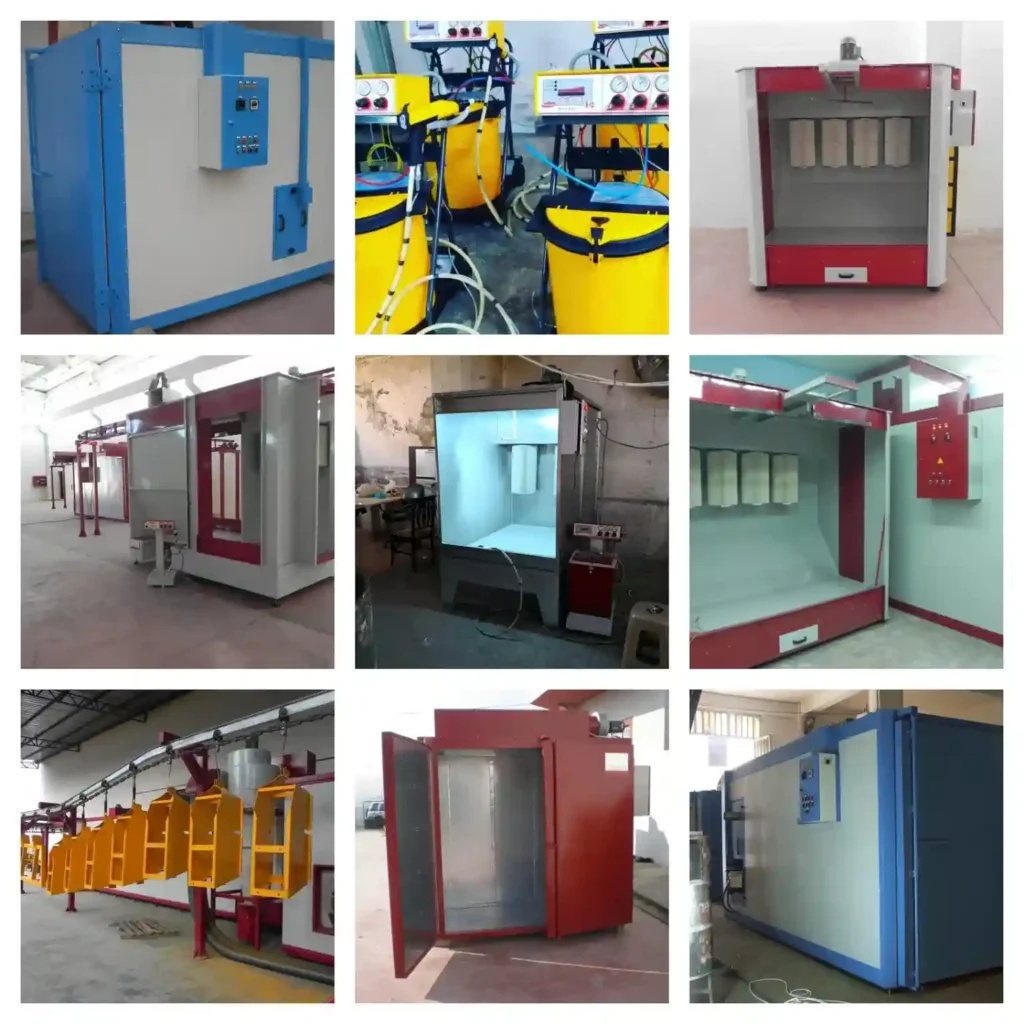
Powder coating equipment is used to apply a thin layer of powder over a metal surface. This type of coating is applied by an electrostatic process and is a very popular method for finishing metal parts.
This type of equipment can be divided into two main categories: automatic and manual. Automatic booths are more popular because they provide better production rates, but they are also more expensive.
A powder booth is an enclosure in which the powder-coating process takes place. Powder-coating equipment includes an oven where the parts are heated to activate the powder, a gun that sprays or brushes on the powder, a conveyor belt that moves parts through the oven, and cartridge-type guns for applying thicker coatings with less overspray.
Powder coating is a technique that is used to provide a finish to metal parts. This technique has been in use for many years and it is still one of the most popular techniques today.
Powder coating equipment consists of booths, ovens, guns, machines, lines and conveyors. A booth can be either automatic or manual. An automatic booth is more expensive than a manual booth but it is also faster and more efficient.
Thermoset powder: Thermoset powders are the most common type of powder coating. They undergo an irreversible chemical reaction during the curing process, forming a hard, crosslinked network that is highly resistant to heat, chemicals, and scratches.
Thermoplastic powder: Thermoplastic powders do not undergo a chemical reaction during the curing process. Instead, they simply melt and fuse together when heated. This makes them less durable than thermoset powders, but they are also more re-flowable, which can be useful for certain applications.
Epoxy powder: Epoxy powders are known for their excellent corrosion resistance and chemical resistance. They are also very hard and durable. However, they can be brittle and are not as UV resistant as some other types of powder coating.
Polyester powder: Polyester powders are the most versatile type of powder coating. They offer a good balance of properties, including durability, corrosion resistance, UV resistance, and chemical resistance. They are also available in a wide range of colors and finishes.
Polyurethane powder: Polyurethane powders are known for their flexibility and toughness. They are also very resistant to abrasion and impact. However, they are not as heat resistant as some other types of powder coating.
Acrylic powder: Acrylic powders are known for their excellent UV resistance and weather resistance. They are also very glossy and have a high scratch resistance. However, they are not as chemically resistant as some other types of powder coating.
Nylon powder: Nylon powders are known for their excellent chemical resistance and abrasion resistance. They are also very flexible and impact resistant. However, they are not as heat resistant as some other types of powder coating.
Fluorocarbon powder: Fluorocarbon powders are known for their excellent chemical resistance, UV resistance, and non-stick properties. They are also very durable and easy to clean. However, they are relatively expensive.
Silica powder: Silica powders are used as fillers and extenders in powder coatings. They can help to improve the adhesion, flow, and leveling of the coating.
Metal flake powder: Metal flake powders are used to create decorative finishes. They can be used to add sparkle, shine, or a metallic look to a powder coating.
Not only do we manufacture our powder coating equipment, we also ship them worldwide to your facility with care
We’re not just the manufacturers of your powder coating equipment, we’re also your worldwide delivery partners.
At EMS Powder Coating Equipment, we understand that getting your powder coating equipment to you quickly and safely is just as important as manufacturing it to the highest standards. That’s why we offer worldwide delivery services to all of our customers.
We work with a network of experienced and reliable shipping partners to ensure that your equipment arrives on time and in perfect condition. We also offer a variety of shipping options to fit your budget and needs.
Whether you need your equipment shipped to a local address or to an international destination, we can help. We’ll work with you to choose the best shipping option for your needs and to keep you updated on the status of your shipment every step of the way.
So when you choose EMS for your powder coating equipment, you’re not just getting the best products on the market, you’re also getting the best possible delivery experience.
Contact us today to learn more about our worldwide delivery services.


